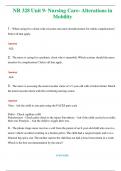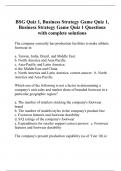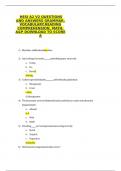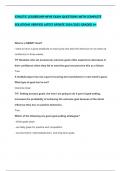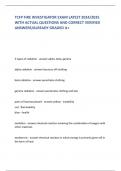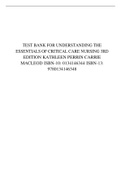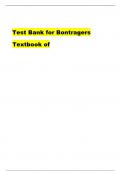Exam (elaborations)
BIO235 Final exam questions - CH 19, 20, 21, 22, 23, 24, 25, 26, 27, 28, 29. Actual Exam Questions Included. Updated 2024.
- Course
- Institution
BIO235 Final exam questions - CH 19, 20, 21, 22, 23, 24, 25, 26, 27, 28, 29. Actual Exam Questions Included. Updated 2024. Which of the following terms identifies the anatomical region found between the lungs that extends from the sternum to the vertebral column and from the first rib to the di...
[Show more]




